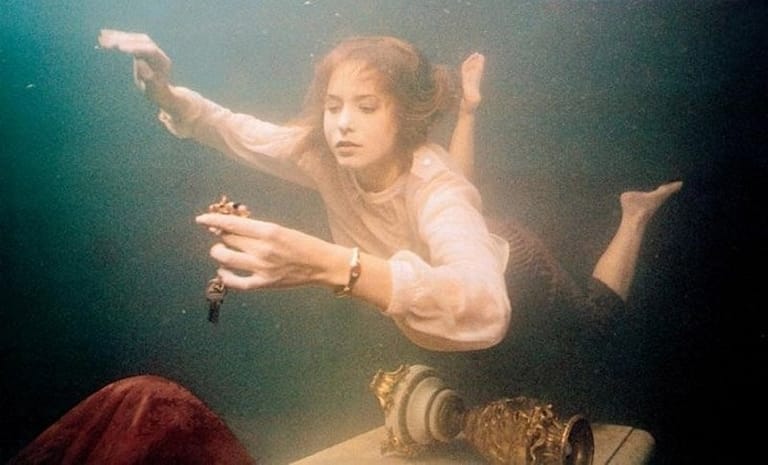Dario Argento’s Inferno (1980)
IFC Center
Part of the Panic Attacks: The Films of Dario Argento series
IFC Center
West Village, NYC
Feb. 2, 2024
Among the great Italian giallo filmmakers, Dario Argento is by far the most well-known and, by now, mainstream. This is not a knock against his craft, not some hipper-than-thou estimation. It is a simple fact. His place in the canon of film-nerdom is certainly deserved. Films like Suspiria, Bird with the Crystal Plumage, and Opera are forever part of our collective horror-consciousness and have informed developments within the genre since their release.
As part of their celebration of the release of Panico, a highly anticipated documentary about the master filmmaker’s career, the IFC Center in the West Village is doing regular screenings of Argento’s classic filmography. Friday night I was fortunate to catch 1980’s Inferno on 35mm.
Originally a spiritual sequel to Suspiria (1977), and now the middle installment of the Three Mother’s Trilogy after the release of late-career Mother of Tears (2007), Inferno finds Argento again in haunted-house mode, favoring spectacle over the concerns of tightened narrative.
There are aspects of this film that a modern audience member could stand to find endlessly frustrating: The “protagonist” and “antagonist” aren’t revealed until the literal last moments —in that, the focus of the film is on so many other characters for so long, we’re not fully aware our survivor has survived until it’s all said and done. The teleological underpinning of the film’s events are, to say it generously, obscure … to say it ungenerously, absent outside of a brief voice over in the opening ten minutes. The stakes, that fetish of all mid-brow dramaturges, are also almost entirely absent.
A modern, streaming-poisoned moviegoer may very well throw their hands up at it all, wonder why we even being asked to watch this is the first place.
Argento’s answer is clear even through the murk of our wherefores and what-abouts.
Argento’s concern, in every one of his movies I’ve had the pleasure of watching, is always the images and the sounds that accompany them. He got his start in the giallo genre, an Italian exploitation and horror form that was made cheap and fast, often using actors with different native tongues, poorly dubbed, but always exciting. So it is fitting that Argento would reach the fullness of his development as an artist through the raw spectacular aspects of his chosen medium.
His work is closer to opera than anything. The self-fashioned rules his work plays by are all about lighting, score, the frame, and the feeling. None of the decisions ever explained or argued for by anything other than their raw aesthetic value. Blood monstrosities covered over with neon lighting, deep purples, and rollicking synth scores — we’re all headbanging to the screams.
And that’s the real thing: these films are, dated as they might seem, beautiful! Whether it’s the scene toward the opening of the film where our first false-protagonist must take a dive into a flooded room — a scene I’ll personally never forget — or the great conflagratory closing, with Death itself swallowed in apocalyptic fire, Argento’s strength is in the image of his imagination. Inferno’s plunge further into the theme of witches and covens that he kicked off with Suspiria is a true guided tour through the nonsense of Hell and horrors beyond comprehension. Our lack of comprehension is the key point here — as with Lovecraft, Argento’s operatic cosmic abyss stares back at us and laughs.
I implore all film fans to take the time to check out at least one or two of these screenings while they’re still playing. The festival closes on the 8th of this month, and there’s really nothing like these movies getting made anymore.






